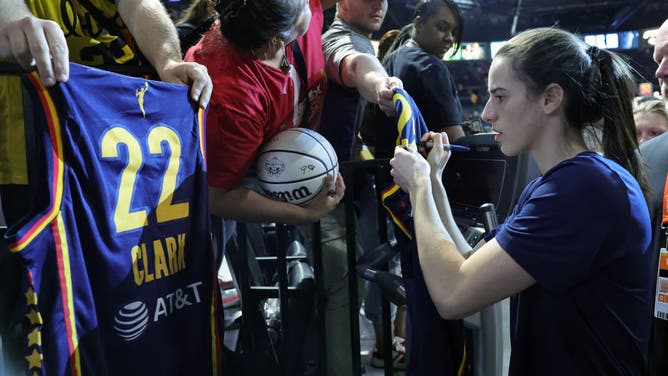We support our Publishers and Content Creators. You can view this story on their website by CLICKING HERE.
In case you were wondering whether the WNBA is benefiting from Indiana Fever guard Caitlin Clark’s rise to stardom, allow me to present some new evidence to ease your doubts.
Before Game 1 of the league’s championship series between the Minnesota Lynx and the New York Liberty, league commissioner Cathy Engelbert announced that next year’s WNBA Finals will be in a traditional best-of-seven format. Currently, the league plays a best-of-five series to decide the champion. Furthermore, the first round of the playoffs will switch from a 2-1 format to decide the best-of-three series to a 1-1-1 format, which allows each team to get at least one home game.
But it’s not just the playoff format that’s going to experience a significant change. According to CBS Sports, the WNBA will now have a league-record 44 regular season games next year (up from 40), and the teams will now be able to travel to those games on charter flights.

Fans of all ages are coming to WNBA games to see Caitlin Clark (far right) play, and the league is benefiting from her stardom in a huge way. (Photo by Ethan Miller/Getty Images)
“The league’s growth and increased demand for WNBA basketball will make this the ideal time to expand the schedule, lengthen the Finals and provide fans more opportunities to see the best players in the world compete at the highest level,” Engelbert said.
This is obviously great news for a league that is trying its best to become as mainstream as other leagues. But again, this doesn’t happen without Clark.
Fans came out in record numbers last year just to watch her play because she is must-see TV. Without her, the league doesn’t really have a marketable star or product to justify this expansion at various levels. If Clark doesn’t play, most people probably aren’t talking about the WNBA, and no one is going to want more opportunities to see games.
The Caitlin Clark effect is a real thing, and it’s positively affecting everything in the league.

 Conservative
Conservative  Search
Search Trending
Trending Current News
Current News 





